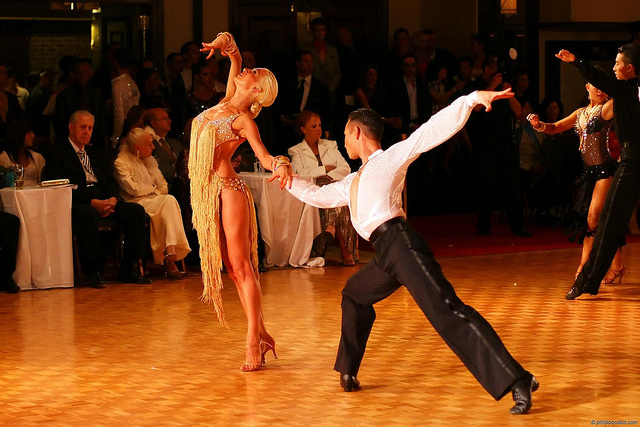
Rhumba
Johanka Lišková
Imagine you are, let's say, about 18 years old. You are somewhere with your beloved one and you want to have a nice and romantic evening. And so, you go dancing. The music in the club has a strong beat to it and you really enjoy joyfully jumping around, but suddenly, the DJ switches the song and now slow music is playing instead. You know what that means - it's time to get a little bit closer and a little bit more emotional...
Rhumba, also known as the Ballroom Rumba, is a Latin-American dance that's very similar to Cha-cha, but it's a tad slower. The word "rumba" was actually used as a designation for the word party in Northern Cuba. It was also used as the primary marketing term for Cuban music before the rise of Mambo, Pachanga or Salsa. Throughout the Latin America, "rhumba" had a lot of meanings - it was mainly referring to Cubanized, danceable and local styles.
As mentioned earlier, the word "rhumba" originally meant party. During the second half of the 19th century, Afro-Cuban workers in the poor neighborhoods of Havana and Matanzas developed several dance-oriented music styles. They often singed and danced - like we do at parties nowadays - and that is how Rhumba was created.
In the "competition world", Rhumba is a dance full of emotions. It is considered mainly a very romantic, love-showing dance, but you can also show sadness - because the main theme of Rhumba is the love between two people. For me, Rhumba is exactly that. Whenever I dance it, I make sure I put all of my emotions and feelings in, whether they are happy or sad.
